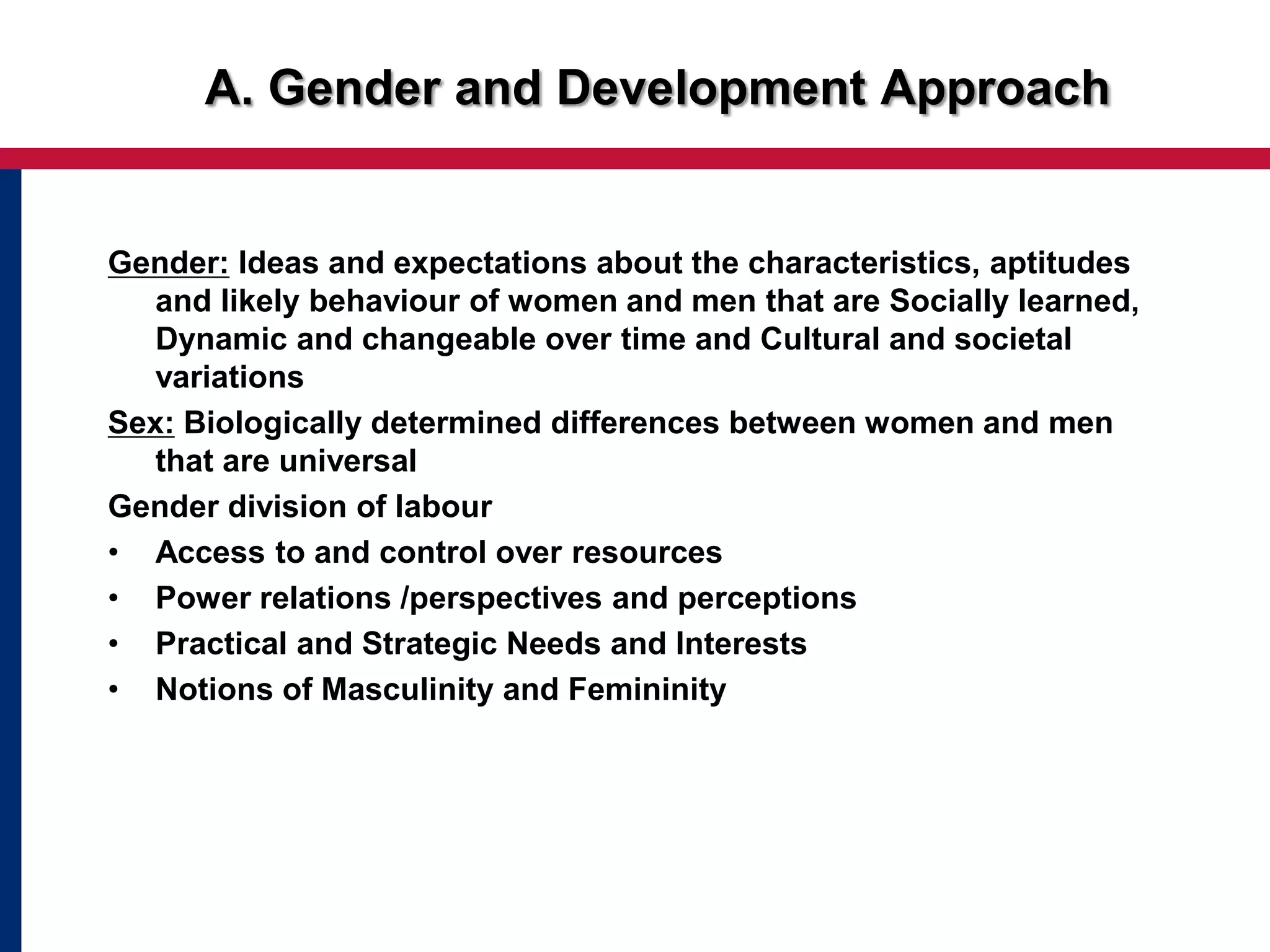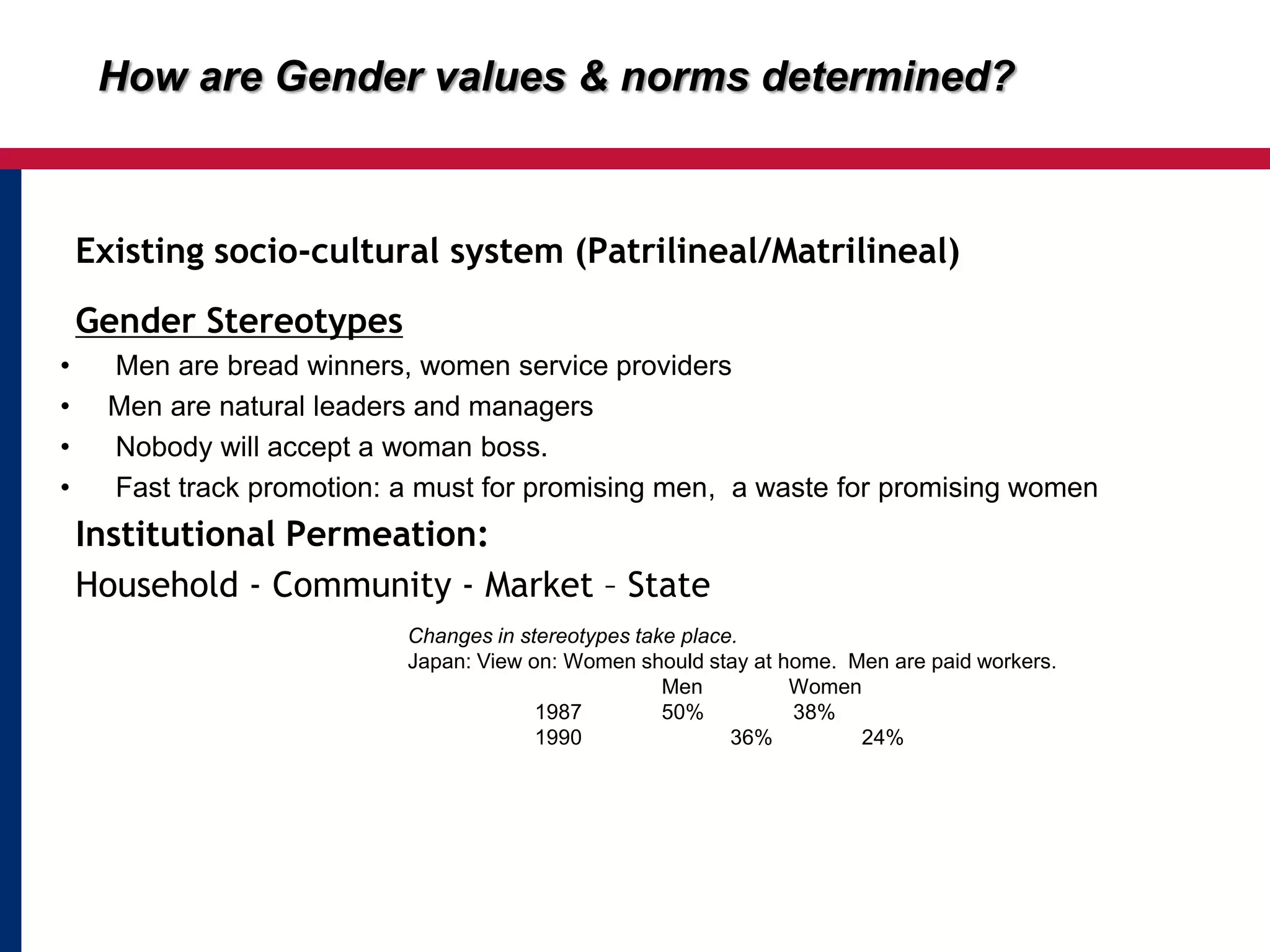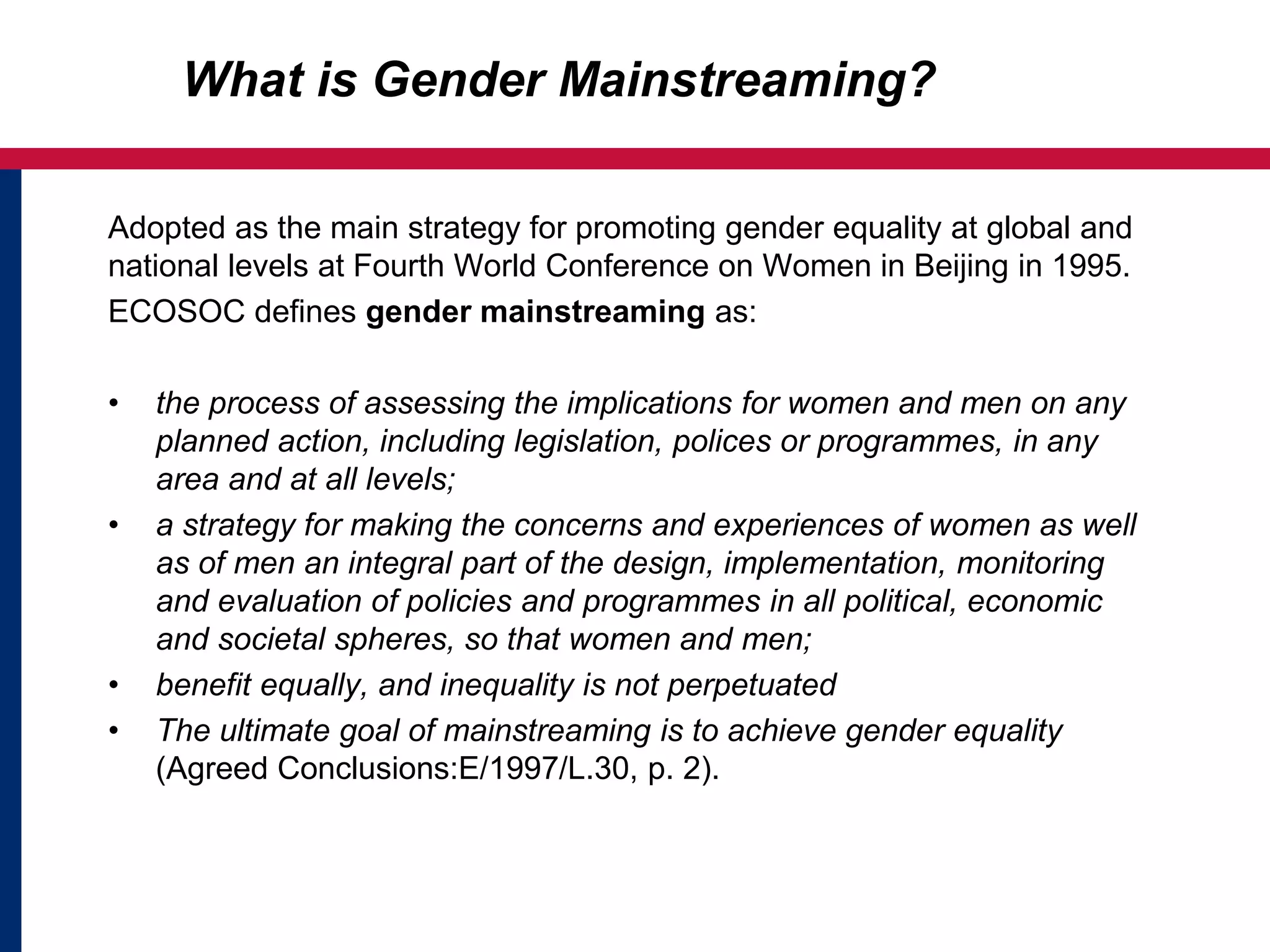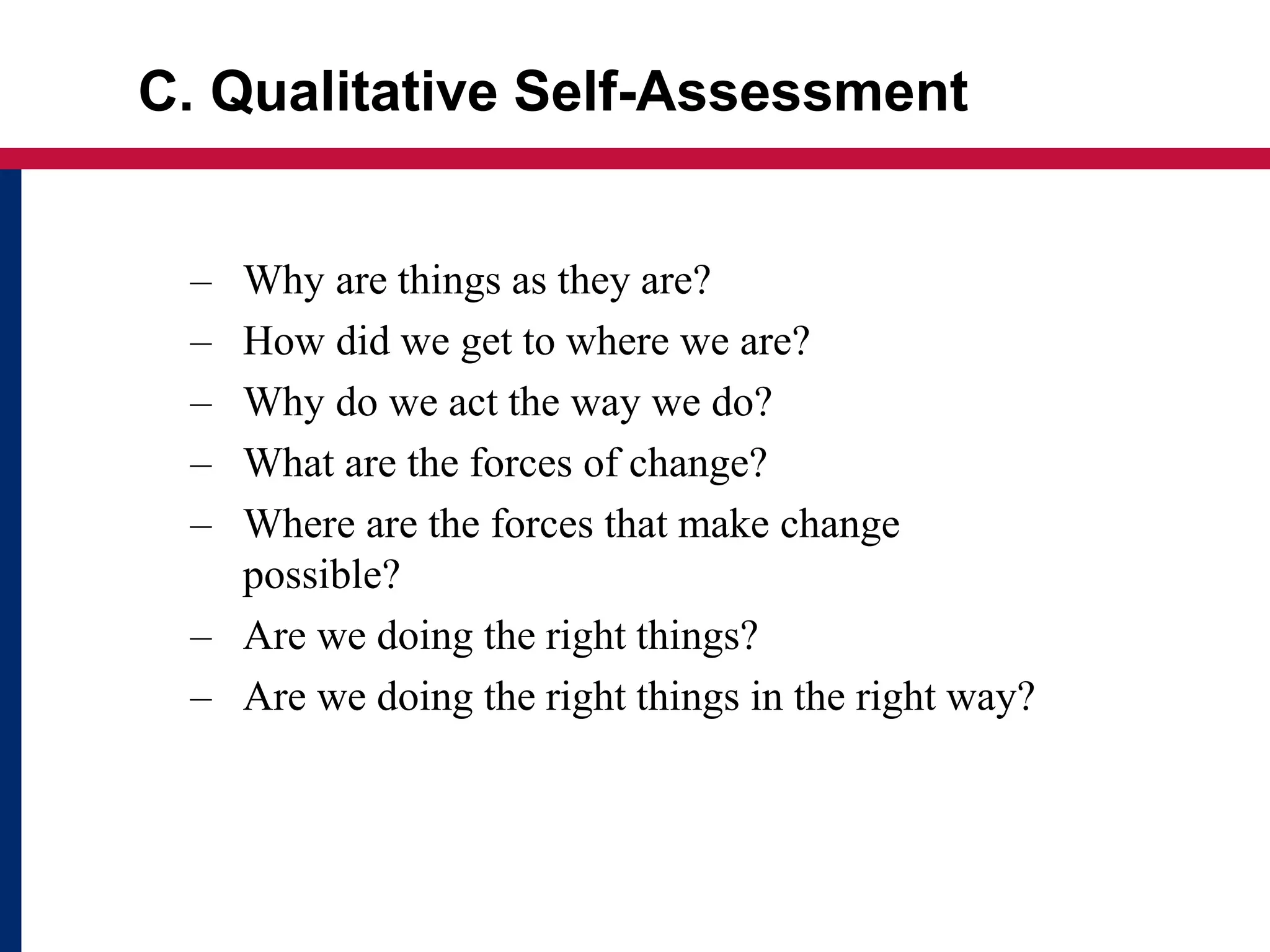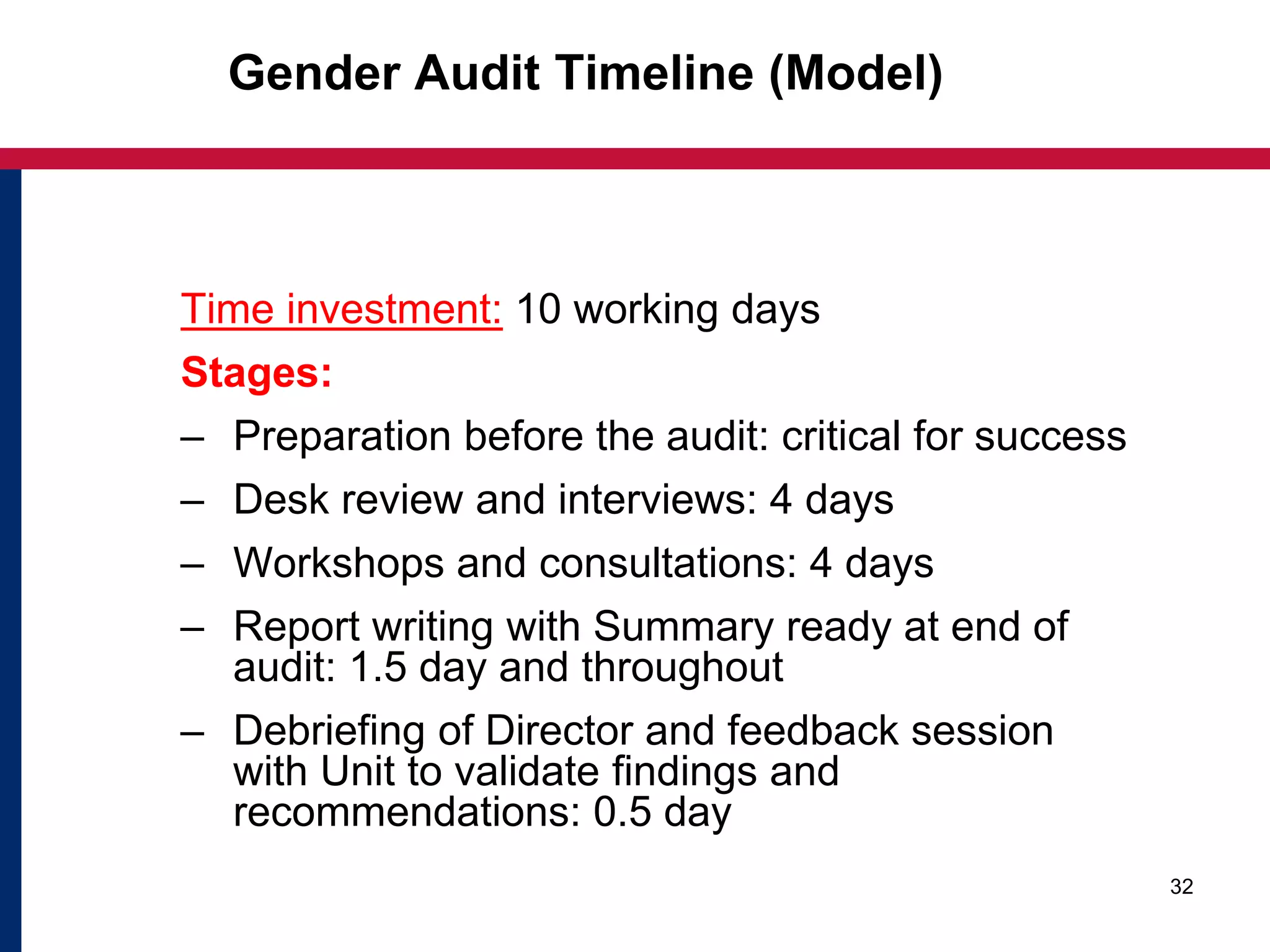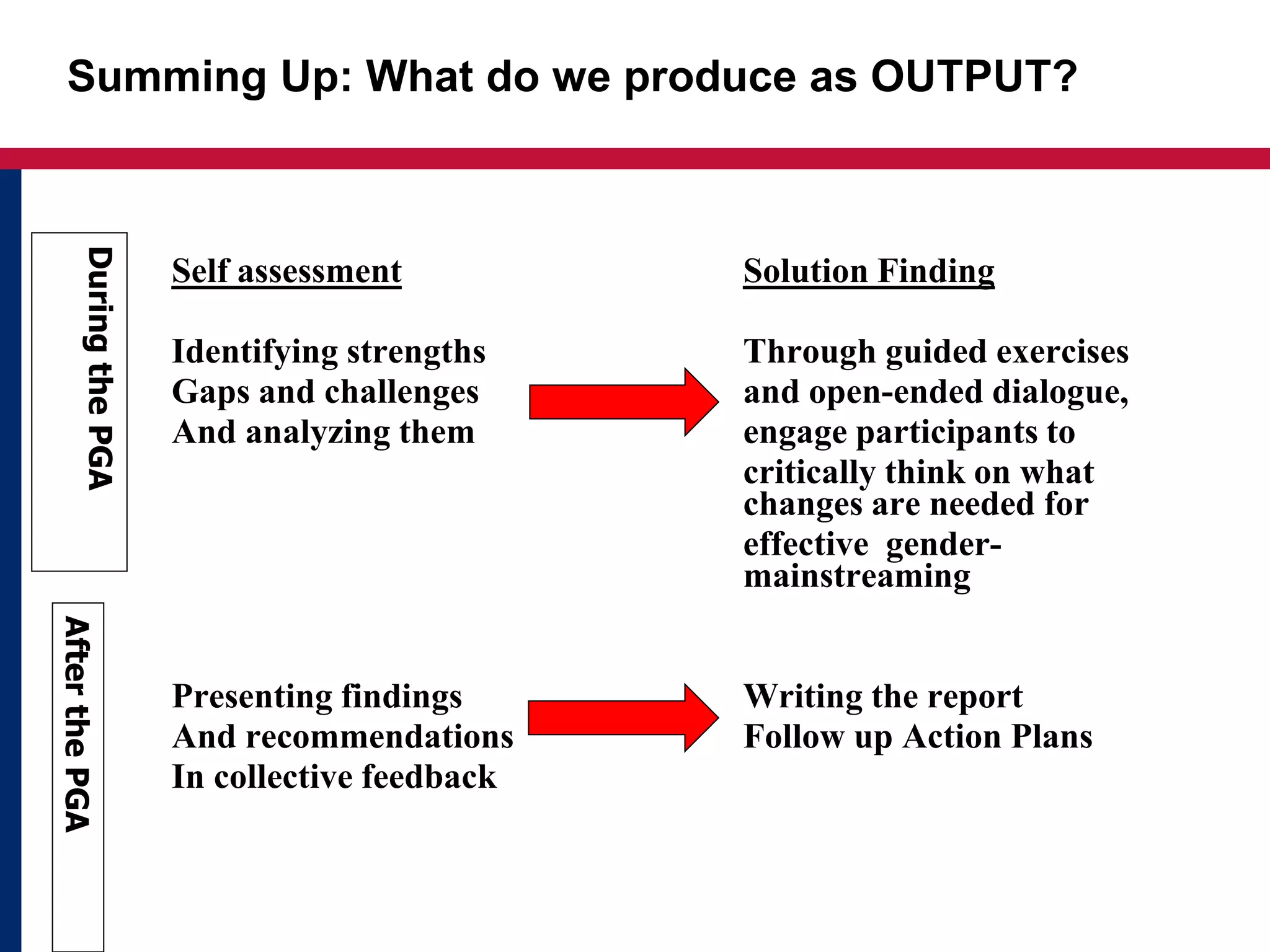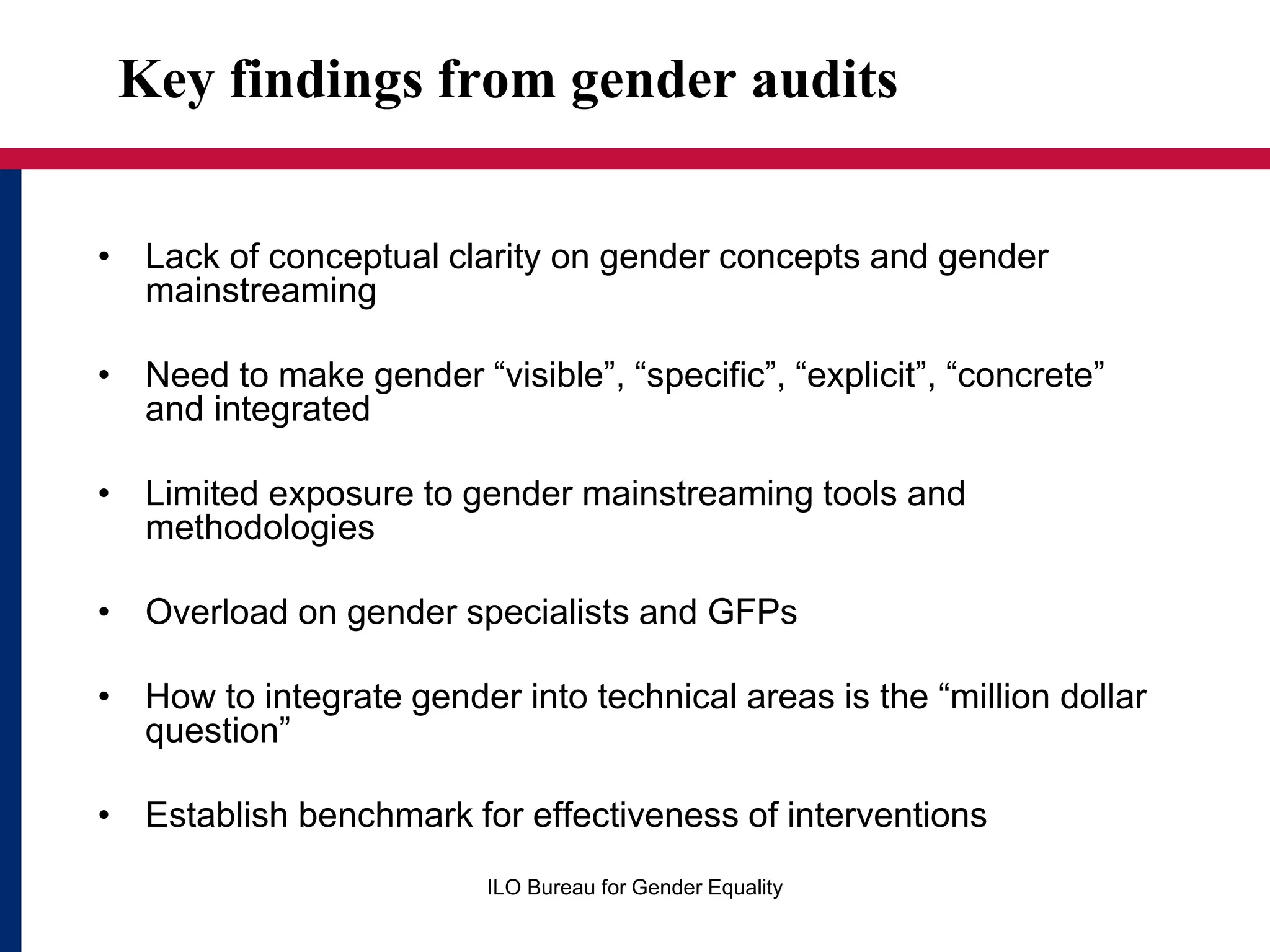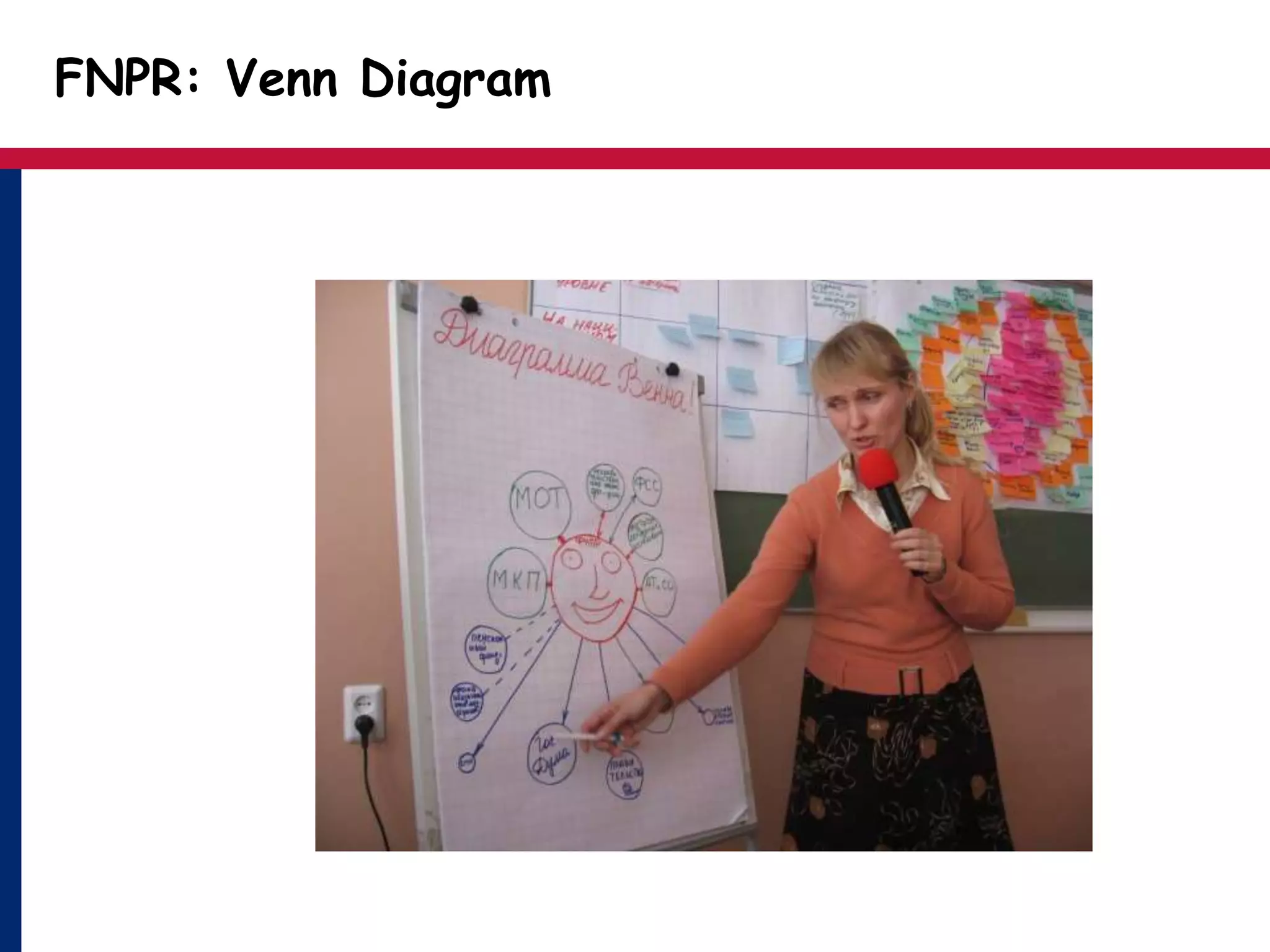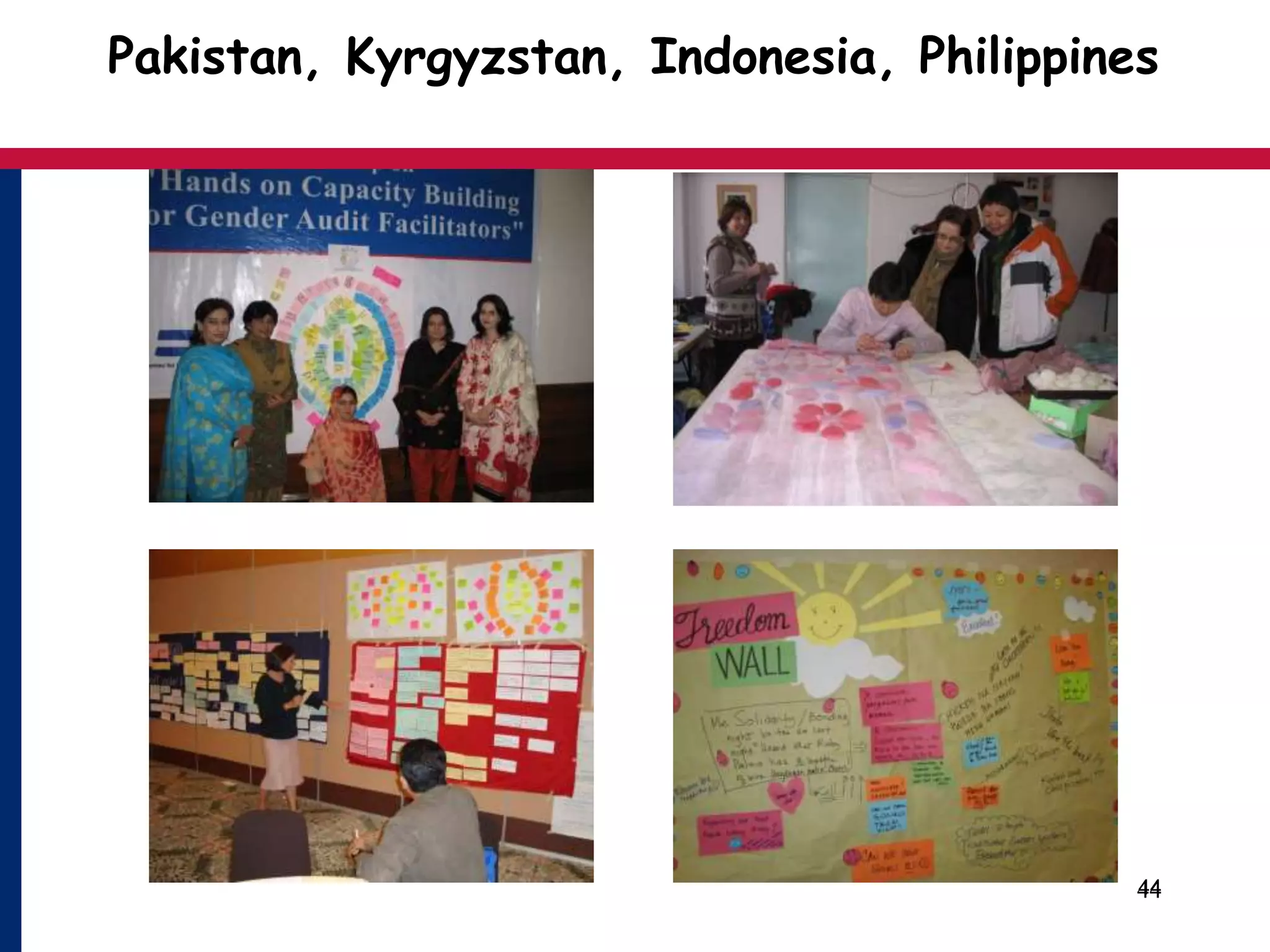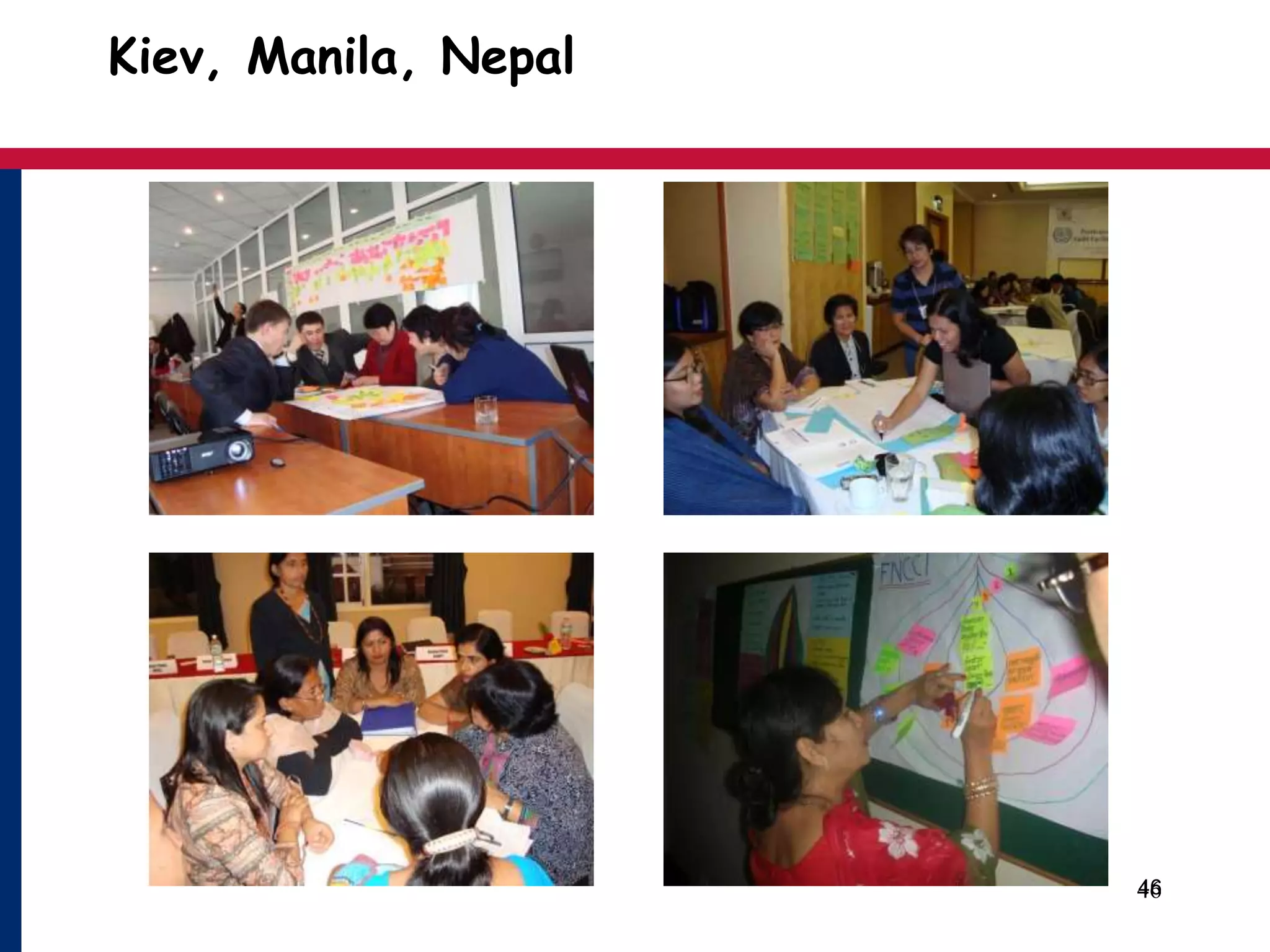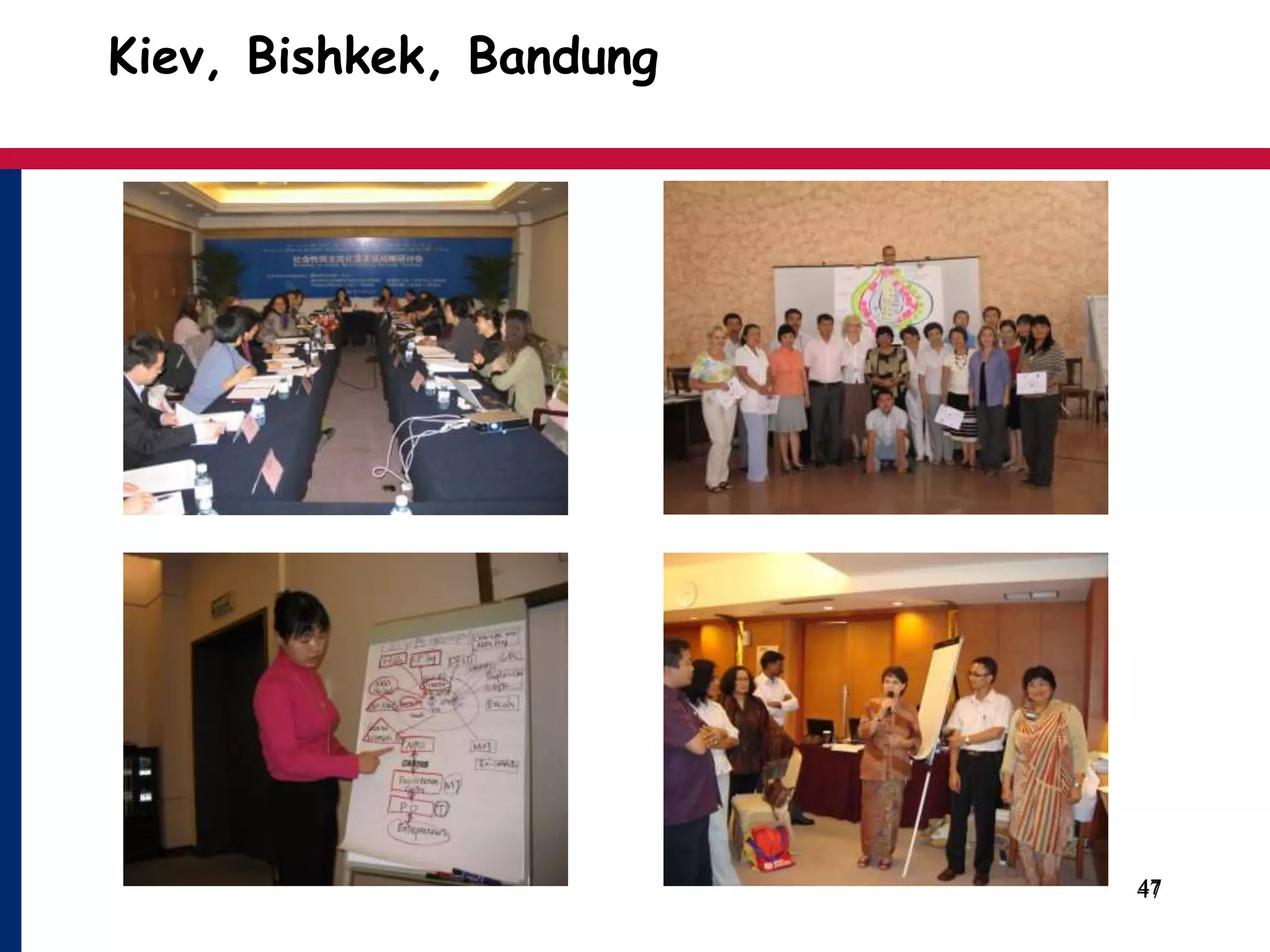1) Participatory gender audits are a tool for organizational self-assessment and gender mainstreaming that were pioneered by the ILO starting in 2001. They involve desk reviews, interviews, and participatory workshops to evaluate how well an organization integrates gender equality.
2) Over 30 ILO offices and constituents like workers organizations underwent gender audits from 2001-2009. Training of facilitators was also provided. Key findings included a lack of gender mainstreaming tools and clarity on concepts as well as limited representation of women.
3) Positive outcomes of the audits included improved gender balance, flexible work policies, and new tools for integrating gender into technical areas. Ongoing challenges include a lack of accountability and













